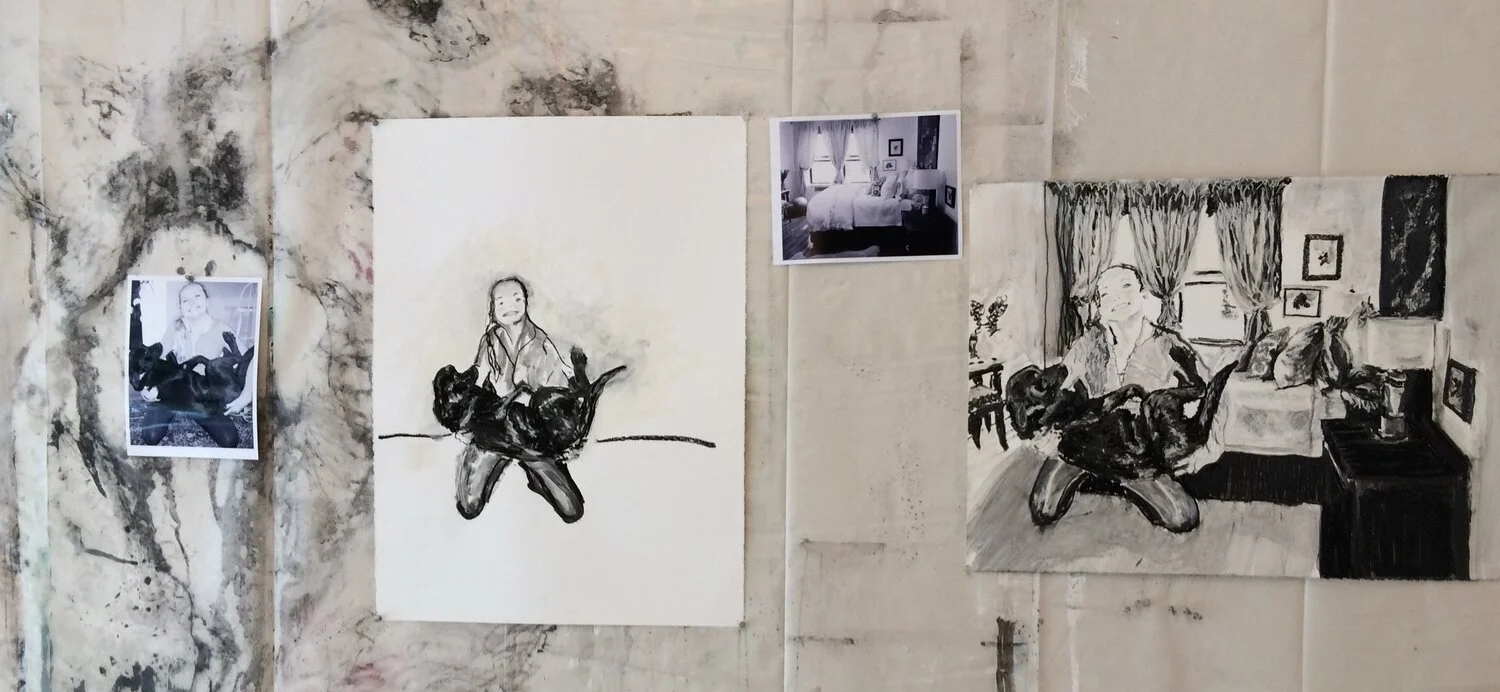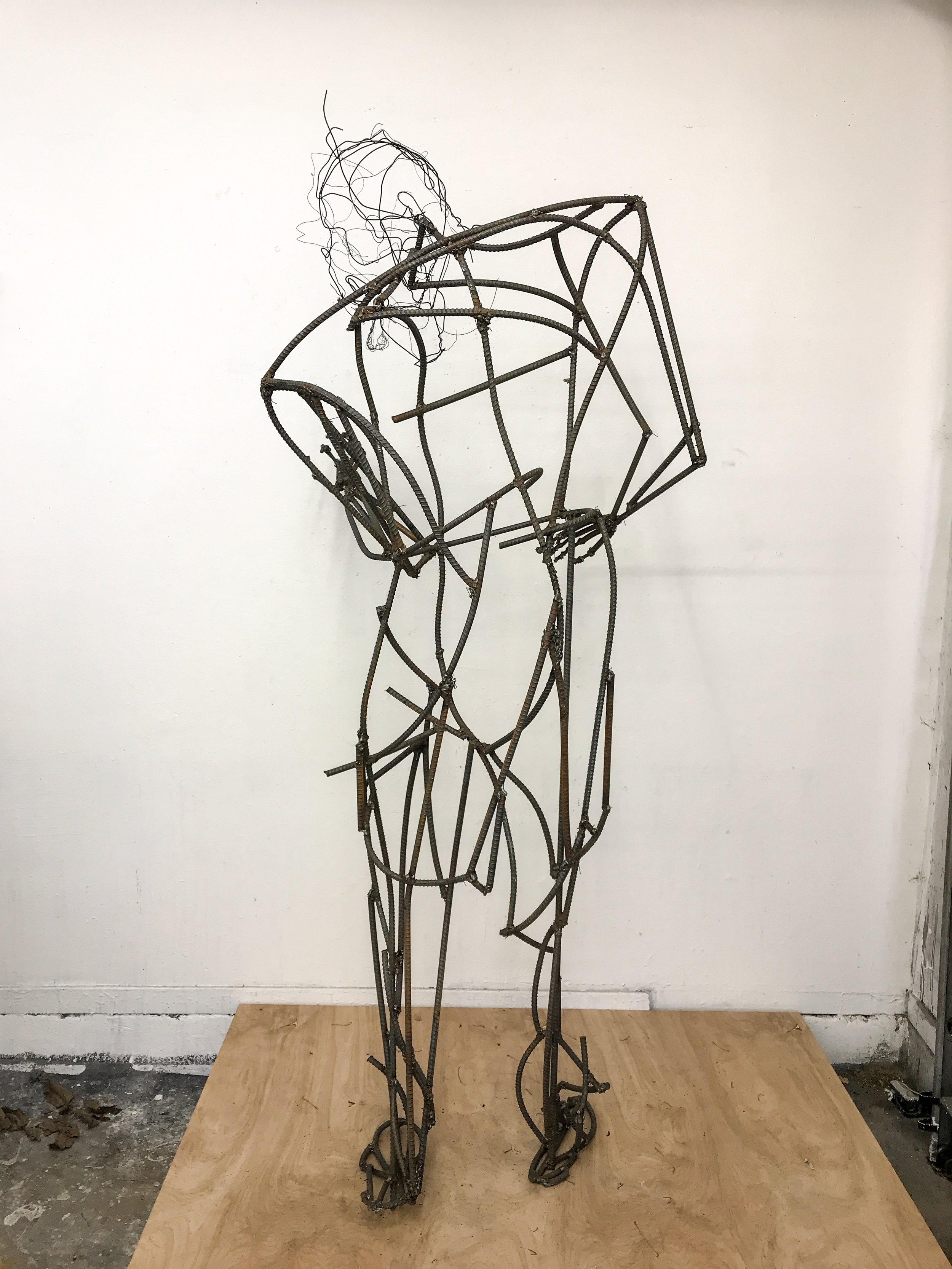11/15/2017
As I work on a piece I start tinkering with what the artist statement should be. Many times both the piece and the artist statement take on unexpected directions and meanings. Below is my latest rendition.
“score”
artist statement
From the beginning of time music has been used as a powerful way to influence human emotion. Modern scientists report that music has the ability to change brainwaves that control our emotional energy. It is presently used not only as an artistic expression, but also in physical and emotional therapy.
“score” was inspired by a slow shutter release photograph of my cousin, Concert Master Andrew Irvin, that captures multiple images as he plays his violin. Applying this concept of multiple images with the raw materials recycled wire, steel, and white concrete “score” embraces both the primal impact, music has on our emotions and the contemporary elements of music. ”score” not only expresses the energy of playing the violin but also the raw energy expressed through music. The application is raw, emotional and visceral


























